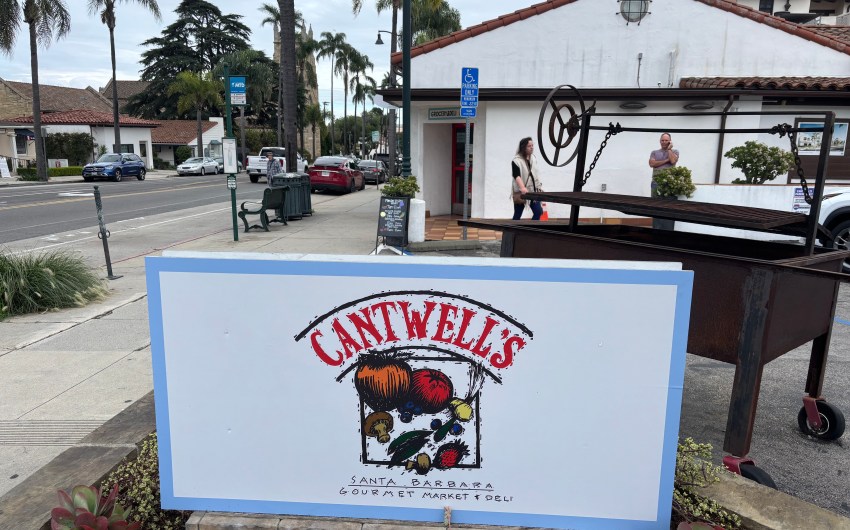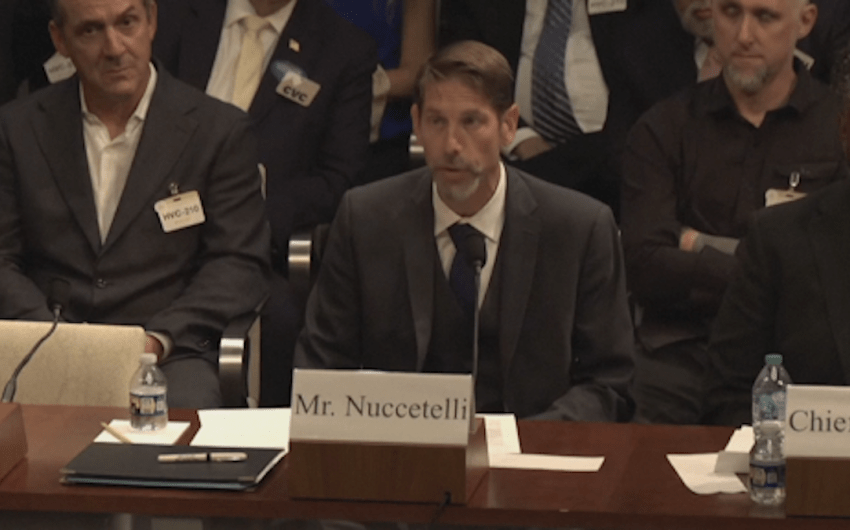Downtown commercial landlords and business owners are of many minds and even more divergent views as to what they think downtown State Street should look like in the near and distant futures. In other words, they are just as divided about how to fix what ails downtown as pretty much everyone else in Santa Barbara — and apparently by similar margins, at least when it comes to the idea of returning cars to State Street.
This was abundantly clear to anyone sitting in on Monday morning’s community gathering — convened by new City Administrator Kelly McAdoo — of about 80 State Street property and business owners, real estate brokers, and bankers designed to plumb their thoughts about how much of State Street, if any, should remain closed off to automobiles. That and what to do about e-bikes, what kind of shuttle service was necessary to get would-be shoppers from Points A to B, and what could be done to infuse the nine blocks between Gutierrez and Sola streets with a greater semblance of social, economic, and cultural vibrancy.
The format was loose; one attendee stood up and asked the property owners in the room with him at the Cabrillo Pavilion if they thought State Street should be reopened to cars, only a handful of hands (no more than five) shot up. When the same question was posed to the business owners present, the results were about the same. While such survey methodology hardly qualifies as scientific, its results were visually stark and roughly consistent with the results of earlier — and seemingly more scientific — surveys taken. Debate over the State Street pedestrian promenade — hatched in the heat of the recent COVID emergency — will no doubt continue no matter how many hands shot up.
The Monday gathering took place at the insistence of City Administrator McAdoo because she felt it critical to engage a constituency vital to the success of any long-term master plan that’s eventually conjured by the State Street Advisory Committee — 17 high-octane wonks and community thought leaders appointed by the city council — now wrapping up its third year of collective cogitation.
In some ways, McAdoo — now entering only her third month at the helm — was too late. The committee just issued a quasi-finished draft report a month ago. In addition, members of the committee were not allowed to attend Monday’s meeting; to do so would have constituted a violation of the Brown Act, which bars duly appointed city officials from attending public meetings for which the public was not given adequate prior notice. But given how the committee is running nearly 18 months behind schedule and the City Council has yet to get even its administrative first draft, presumably there is still time for decision makers to infuse themselves with the business community’s concerns.

As to cars versus no cars, the committee sought to saw the baby in half. With the exception of three blocks — the 700, 800, and 900 blocks of State Street — the committee has proposed allowing cars back on State Street, though mostly only one lane, going one way.
What the business-minded people in the room wanted to know was how much it would cost to bring to life all the pretty pictures the plan called for: wider sidewalks for all nine blocks, flat and flexible streetscapes engineered to allow a multiplicity of uses. Where would all the money come from? How long would take for these dreams to bear fruit? Five, ten, fifteen years? What would happen to State Street, they wondered, in the meantime?
Pascucci’s owner Laura Knight, a long-term business survivor on State Street, said the projected cost of storm water treatment alone would cost $10 million a block. “It’s nice to go shopping,” Knight said. “But if you have no money, it’s a waste of money. Why are you doing it?”
City Hall officials would not confirm that figure. In fact, the price tag associated with many of the urban dreamscapes has yet to be tabulated. Business leaders like Trey Pinner wanted more than pretty pictures. In addition to the costs, they wanted to know the return on investments. And where was the data coming from, Pinner wanted to know? The chapter on economic vitality, he politely stated, was sorely lacking.
The committee’s administrative first draft is scheduled to be released to the council sometime later in August. Between then and any meaningful vote, there will be much fleshing out of the details, such as figuring out total costs, what level of storm water capture is mandated beyond City Hall’s control, and how to get bike riders to get off their bikes and “walk their wheels” for three to five blocks. Would new bikes lanes on Chapala and Anacapa be required?
The economic engine that will be driving the new downtown, explained Community Development Director Elias Isaacson, is housing. Later this summer, developer Peter Lewis is slated to start leasing our the 78 new rental units he’s just built on the 400 block of State Street where the old Staples used to be. The bank stuck holding the $121 million loan default on Paseo Nuevo is negotiating with City Hall — which owns most of the land underneath the mall — to build roughly 500 new rental units in place of the long-vacant Macy’s building and the rest of Paseo Nuevo. With 500 to 1,000 proposed new housing units slated to become reality, the question will no longer be how to bring people downtown. They will already live there.
In the meantime, the council will be given a menu of relatively cheap and easy improvements — like more aggressive streetscape cleaning, a more playful public art program, and the removal of some of the large planters and other sidewalk furniture to expand existing sidewalk space for outdoor dining. The council has yet to deliberate on these matters, but the plan is to focus on changes that can be accomplished within six to 12 months.
Premier Events
Fri, Jan 09
5:30 PM
Santa Barbara
Intention Setting & Candle Making Workshop
Sun, Jan 11
3:00 PM
Santa Barbara
Mega Babka Bake
Fri, Jan 23
5:00 PM
Santa Barbara
Divine I Am Retreat
Fri, Jan 09
8:00 AM
Santa Barbara
Herman’s Hermits’ Peter Noone: A Benefit Concert for Notes For Notes
Fri, Jan 09
6:00 PM
Santa Barbara
Ancestral Materials & Modernism
Fri, Jan 09
6:00 PM
Montecito
Raising Our Light – 1/9 Debris Flow Remembrance
Fri, Jan 09
7:00 PM
Santa Barbara
Barrel Room Sessions ~ Will Breman 1.9.26
Sat, Jan 10
9:00 AM
Santa Barbara
Rose Pruning Day | Mission Historical Park
Sat, Jan 10
7:00 PM
Santa Barbara
Konrad Kono – Live in Concert
Sat, Jan 10
8:00 PM
Santa Barbara
SB Improv: The Great Cornadoes Bake-Off
Mon, Jan 12
5:00 PM
Santa Barbara
Hot Off the Press: Junk Journal
Tue, Jan 13
6:00 PM
Santa Barbara
✨ First Singles Social of 2026 | Open to All Ages 21+
Fri, Jan 16
9:00 PM
Santa Barbara
Eric Hutchinson at SOhO
Fri, Jan 09 5:30 PM
Santa Barbara
Intention Setting & Candle Making Workshop
Sun, Jan 11 3:00 PM
Santa Barbara
Mega Babka Bake
Fri, Jan 23 5:00 PM
Santa Barbara
Divine I Am Retreat
Fri, Jan 09 8:00 AM
Santa Barbara
Herman’s Hermits’ Peter Noone: A Benefit Concert for Notes For Notes
Fri, Jan 09 6:00 PM
Santa Barbara
Ancestral Materials & Modernism
Fri, Jan 09 6:00 PM
Montecito
Raising Our Light – 1/9 Debris Flow Remembrance
Fri, Jan 09 7:00 PM
Santa Barbara
Barrel Room Sessions ~ Will Breman 1.9.26
Sat, Jan 10 9:00 AM
Santa Barbara
Rose Pruning Day | Mission Historical Park
Sat, Jan 10 7:00 PM
Santa Barbara
Konrad Kono – Live in Concert
Sat, Jan 10 8:00 PM
Santa Barbara
SB Improv: The Great Cornadoes Bake-Off
Mon, Jan 12 5:00 PM
Santa Barbara
Hot Off the Press: Junk Journal
Tue, Jan 13 6:00 PM
Santa Barbara
✨ First Singles Social of 2026 | Open to All Ages 21+
Fri, Jan 16 9:00 PM
Santa Barbara


























You must be logged in to post a comment.